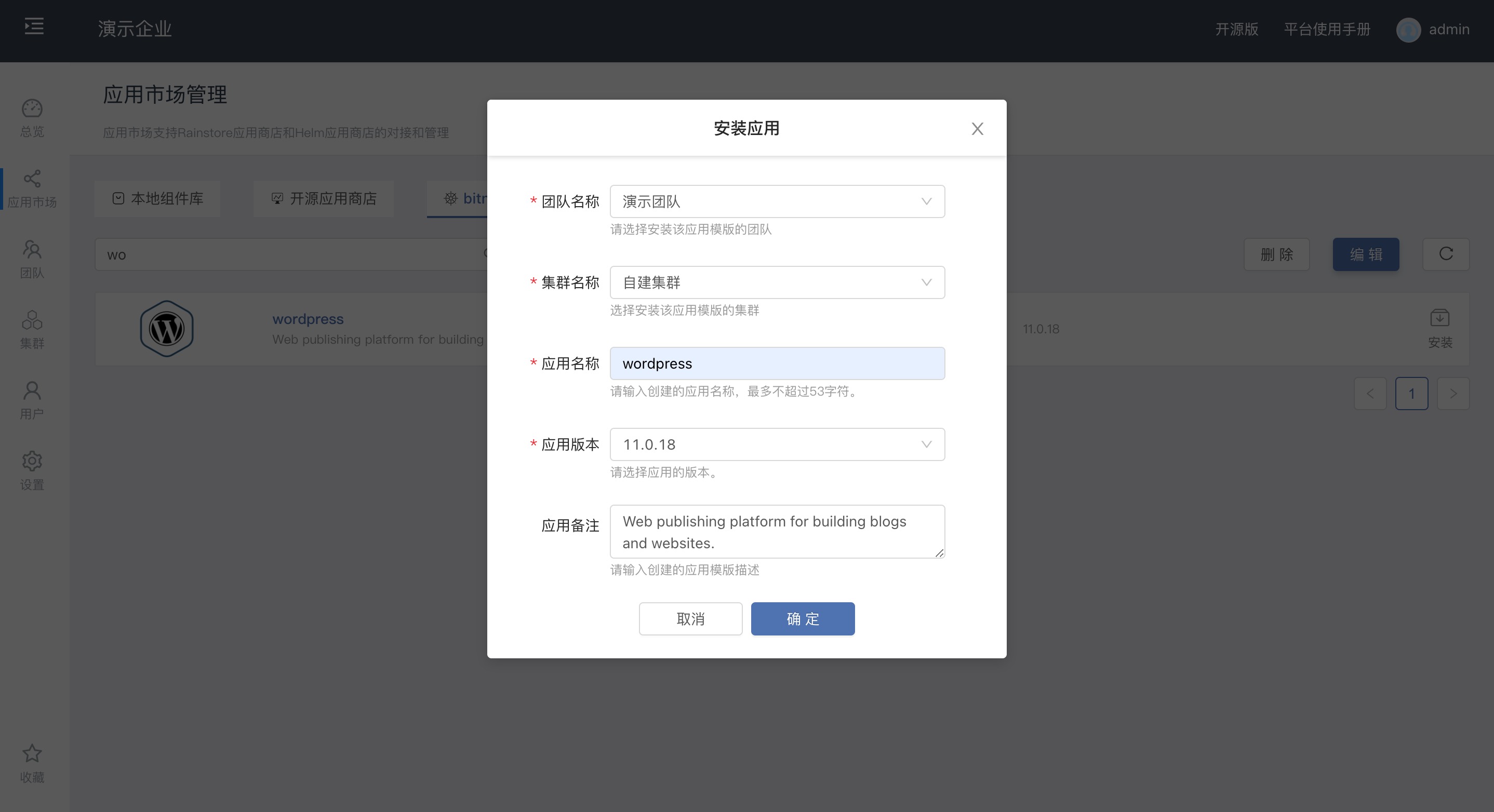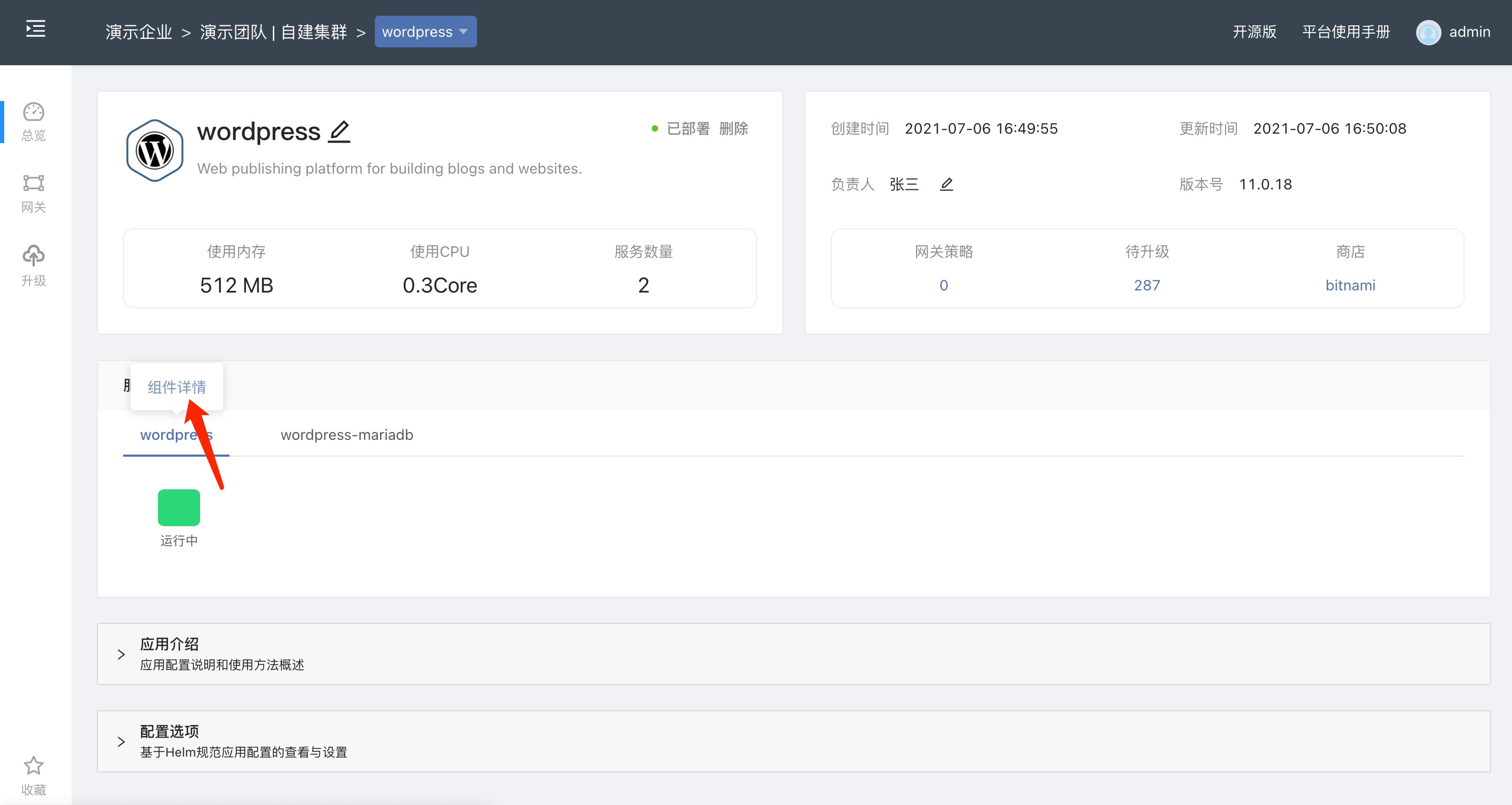Deploy the Helm application
Following this document enables developers or operators to deploy applications in Rainbond based on the Helm repository.
Preconditions
Before you start, you need to meet the following:
- Have dockedHelm app store
- Have a team available
Operating procedures
The app is installed with two entries:
No.1 Install directly in the Enterprise View App Market
Click the install button behind the application in the Helm store , select the teamthat needs to be installed, define the application name, click to confirm , and the installation will start automatically.

No.2 Select the application to install in the team view based on the application market creation component
In the team view, click to add --> to create a component based on the application market, select the application in the docked Helm application store, click to install to automatically start the installation.
Installation process

The installation process is divided into the following four steps:
- initialization
Automatically create CR resources required for application deployment
- detect
Detect whether the application can be deployed normally. If the application cannot be deployed normally due to K8s apiVersion problems or other errors, an error message will be displayed here
- configure
Provides the application deployment configuration function, provides a graphical way to modify the values.yaml file configuration, and can choose the values.yaml file used during deployment. For the configuration modification method, see Helm Application Management, it should be noted that Stateful applications When you need to mount the storage, you must specify thestorageClassto be used, and the specification method is as follows:
No.1
Specify in the values.yaml file or specify graphically, and graphically specify referenceHelm application management
No.2
Set the rainbondvolumerwx automatically created when Rainbond is deployed as the cluster default storageClass , then the storageClasswill be used by default when deploying the Helm application. The setting command is as follows
kubectl patch storageclass rainbondvolumerwx -p '{"metadata": {"annotations":{"storageclass.kubernetes.io/is-default-class":"true"}}}'
- Install
After the above steps, enter the installation process, and the application can be used after installation.
app usage
After the application is installed, the platform will automatically create the component as a third-party component of type k8s ; in the application interface , service instance will display all components contained in the application, click the corresponding component name, click Component details You can enter the component network settings page, open external serviceson the port page, and access the application according to the generated access policy If you deploy middleware classes and services, open internal services here. can be used by other services in the platform.

